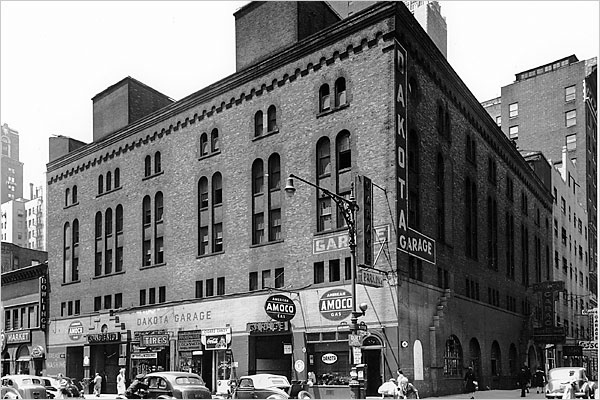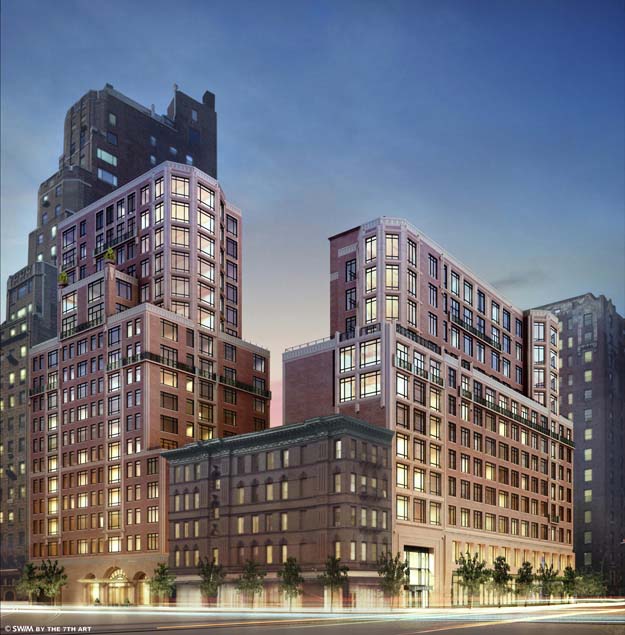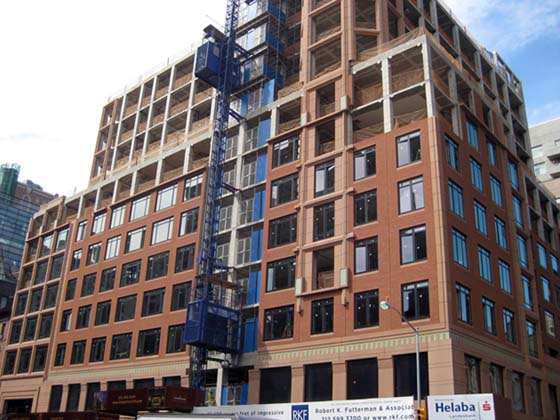| New York
Architecture Images- Gone / Demolished / Destroyed Dakota Stables |
|
|
architect |
Charles Romeyn |
|
location |
Broadway and 75th |
|
date |
1885 |
|
style |
Chateauesque Romeyn designed a robust, picturesque, Romanesque-style structure of brick and brownstone, three stories high, the third expressed as a long mansard. |
|
construction |
Brick |
|
type |
Stables |
|
|
|
|
|
|
 |
|
 |
|
 |
|
| On the site today.. | |
|
Q. Did the Dakota Stables, once at Broadway and 75th, have any connection
to the Dakota apartment house? ... Michael S. Lambe, Carmel, N.Y. A. It is not exactly clear how the 1885 Dakota Stables, built at the same time as the better-known Dakota and by the same family, was related to the famous apartment house, which was completed in 1884. Edward Clark, the builder of the Dakota apartments, died in October of 1882, before construction finished. The direction of Clark’s considerable real estate operation fell to his son, Alfred Corning Clark. The following July, the younger Clark filed plans for what became known as the Dakota Stables, taking up the southerly blockfront of 75th between Amsterdam and Broadway. For the first project of the Clark real estate empire since the death of its founder, the younger Clark ignored Henry J. Hardenbergh, his father’s long-time architect of choice, and hired Charles Romeyn; indeed it appears that Hardenbergh never worked for the Clarks again. Romeyn designed a robust, picturesque, Romanesque-style structure of brick and brownstone, three stories high, the third expressed as a long mansard. The ground floor served as an assembly area, and there were 145 stalls for horses on the second floor. The stated cost of construction was $60,000, about $400 per horse. The Dakota’s cost was often said to be $2 million; if there were 250 residents among its 60-odd apartments, that would be about $8,000 per person. In 1883 The Real Estate Record and Guide announced that the stables would be “in connection with the Dakota,” but neither The New York Sun nor The New York Times nor a wide variety of magazines carried an article or an advertisement designed to attract customers. There is no evidence that the stables were built specifically for Dakota residents. Boarding and livery stables were in short supply on the newly developed West Side. Like other big stables it served as a sort of club and office for coachmen and grooms; in 1895 The Times carried a position-wanted ad for a coachman named P. Jones, who described himself as a “young colored man” who was “generally useful; very neat,” and asking for replies care of the Dakota Stables. The New York Sun reported variously that the aging structure had been sold by the Clarks (1902); would be replaced by a 14-story garage (1905); and was to make way for an apartment building (1906). But in 1910 it was altered to accommodate automobiles, and the Dakota name was taken up by a different stable, on Amsterdam and 77th. The original Dakota Stables was known for a time as Dakota Auto Repair. A 1916 map shows a one-story structure on the site, and the present Hotel Beacon was built there in the 1920s. ------------ Dakota Stables(350 Amsterdam Ave.); 1894-2006; Related Companies; “The Harrison” nearing completion |
|